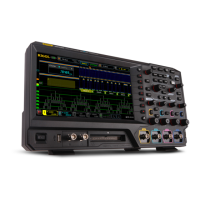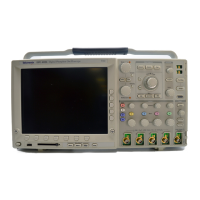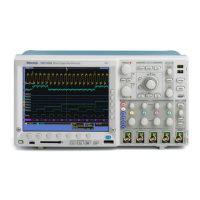Status and Events
ACQUIRE:DATA:
CLEAR
ACQUIRE:STATE ON
/** Wai t until the acquisition is complete
before querying the curve data**/
*OPC?
/** Wai t for read from Output Queue **/
/** Get the c
urve dat a **/
CURVE?
This is the simplest approach. It requires no status handling or loops. However,
you must set the controller timeout for a longer period of time than that used
by the acquisition operation.
Messages
This section covers all the programming interface event messages the instrument
generates in response to commands and queries.
For m ost messages, a secondary message from the instrument gives more detail
about the cause of the error or the meaning of the message. This message is part
of the message string and is separated from the main message by a semicolon.
Each message is the result of an event. Each type of event sets a specific bit in the
SESR and is controlled by the equivalent bit in the DESER. Thus, each message
is associated with a specific SESR bit. In the message tables, the a ssociated SESR
bit is specified in the table title
, with exceptions noted with the error message text.
No Event
The following table shows the messages when the system has no events or status
to report. These have no associated SESR bit.
Table 3-3: No Event Messages
Code Message
0 No events to report; queue empty
1
No events to report; new events pending *ESR?
Command Error
The following table shows the command error messages generated by improper
syntax. Check that the command is properly formed and that it follows the rules
in the section on Command Syntax.
Table 3-4: Command Error Messages (CME Bit 5)
Code Message
100
Command error
101 Invalid character
102
Syntax error
DSA/CSA/TDS8X00/B Series Programmer Manual 3-11
